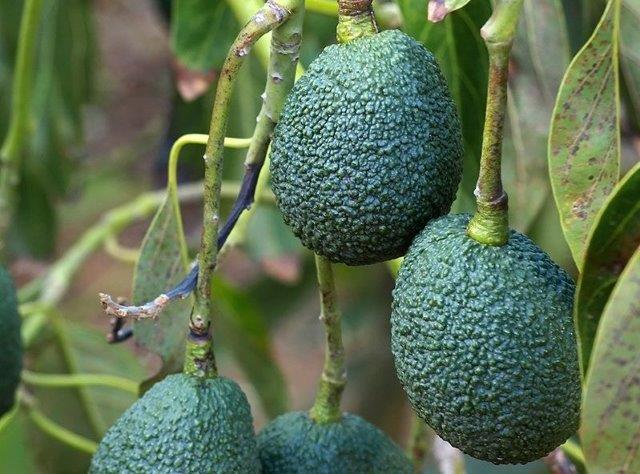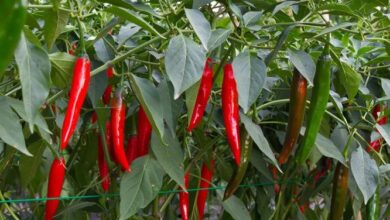ZincGat Chelate in Avocado – It works !
Zinc (Zn) is absorbed by the plant as the cation Zn2+, which is dissolved in the soil solution
Shachar Tavor, Gat Fertilizers Agronomist


zinc is one of the microelements essential to plants in general, and particularly for avocado. research has shown that zinc is necessary for growth processes and
protein synthesis.
according to professional instructions in international publications, the desired zinc index concentration in leaf analysis is 30 ppm or above (ifa, 1992), but the values we find in israel are about 15-20 ppm (motti peres, ministry of agriculture, 2018).
one of the main reasons for zinc deficiency is likely to be that the avocado tree originates from equatorial areas, with typically acidic soils. in those soils, zinc is available in the soil solution, and the trees can benefit from it. we have acclimatized avocado trees in israel in different soil conditions. our soils are typically chalky, with basic ph of 7.5-8.5. under these conditions, zinc is found in insoluble compounds,
so its availability in the soil solution is low. given this situation, in many orchards annual zinc chelate treatment is necessary (with zinc-gat) thus applying ongoing treatment during the fertigation season.
this is no different than we have to nourish the orchard with nitrogen, phosphorus and potassium (macro elements) each season.
hidden (covert) deficiency is diagnosed by leaf analysis according to the indexes cited above. a hidden deficiency will manifest as damage to the orchard and its yield but is difficult to diagnose with the naked eye.
in case of visible deficiency, the appearance is clear, and the damage is already done.
symptoms of zinc deficiency in avocado :the leaf joints crowd together, appearing as a rose-like formation of leaves.the fruit is ball shaped instead of pearlike, and is liable to be rejected for marketing.

gat fertilizers is providing the “zinc gat chelated” solution for over 3 decades either for direct fertigation or combined with a fertilizer solution to counterbalance the zinc deficiencies. detailed instructions for use and combining zinc with compounded fertilizer may be found in the catalog on the gat fertilizers site: www.gatfertilizers.com.
for a minor deficiency, combine 40 liters/hectare, and for a grave deficiency, fertilizing is up to 80 liters/hectare.
we are in the process of conducting a comprehensive study of zincgat chelate in avocado orchard – the course of the experiment and initial results (until dec 2020):
in the spring of 2019, a discussion was held, prior to the upcoming season, finding zinc levels were lower than necessary. leaf analysis in the fall of 2018 exhibited an average of about 15 ppm.
as a result, 6 applications of zincgat were performed at 13 liters/hectare per application, with accordance to the experiment setup, during the fertigation months.
in the leaf analysis from the fall of 2019 (3 october), an increase of 33% was found in the zinc values compared to the control, 18.24 ppm compared to 13.68 ppm, respectively. the experimental plot was harvested and weighed in early 2020. the overall yield in the experimental plot during the 2019-20 season was relatively low, reaching about 8000 kg/hectare, without a notable difference between the control
and the treated plot.
flower analysis was performed on april 6, 2020, for npk and micro-elements. the zinc values were higher by 16% compared to the control. the result was statistically significant. it should be noted that the analysis was conducted before the 2020 season’s irrigations began, meaning that the increase came from the “loading” of zinc in the previous season.
in the leaf analysis on october 4, 2020, an increase of 42% was found in zinc values compared to the control, 27.02 ppm compared to 18.97 ppm, respectively. harvest and weighing are planned spring of 2021, to examine the influence on the yield.
as another complementary solution, we create an effect of acidification of the root zone, by using npk fertilizers from the blue family. in this family, we combine a nitrogen stabilizer in the fertilizer solution, which causes extended preservation of nitrogen as an ammonium cation, nh4+, in the soil solution. in the ammonium absorption process, acidification is created in the root zone area, with increased zinc availability.
furthermore, the addition of important nutrients to the fertilizer solution should be considered, (tested and examined at gat fertilizers), particularly from the biostimulants family – the flagship product “bio humigat” (humic & fulvic acids), and “bio gat 30” (seaweed extract).
references:
1. zinc fertilization of avocado trees: david e. crowley and woody smith, 1996. zinc fertilization of avocado trees department of soil and environmental sci. hortscience 31(2):224–229.
1996.https://journals.ashs.org/hortsci/abstract/journals/hortsci/31/2/article-p224.xml
2. zinc deficiency in the avocado: application of zinc chelates to soils may solve the zinc problem e.f. wallihan, t.w. embleton, wilma printy (california agriculture, june 1958).
http://calag.ucanr.edu/archive/?type=pdf&article=ca.v012n06p4
3. https://deshengat.co.il/%d7%90%d7%91%d7%a5-4 5%d7%92%d7%aa/ 4. cdfa – frep – ca fertilization guidelines – avocado: cdfa.ca.gov




